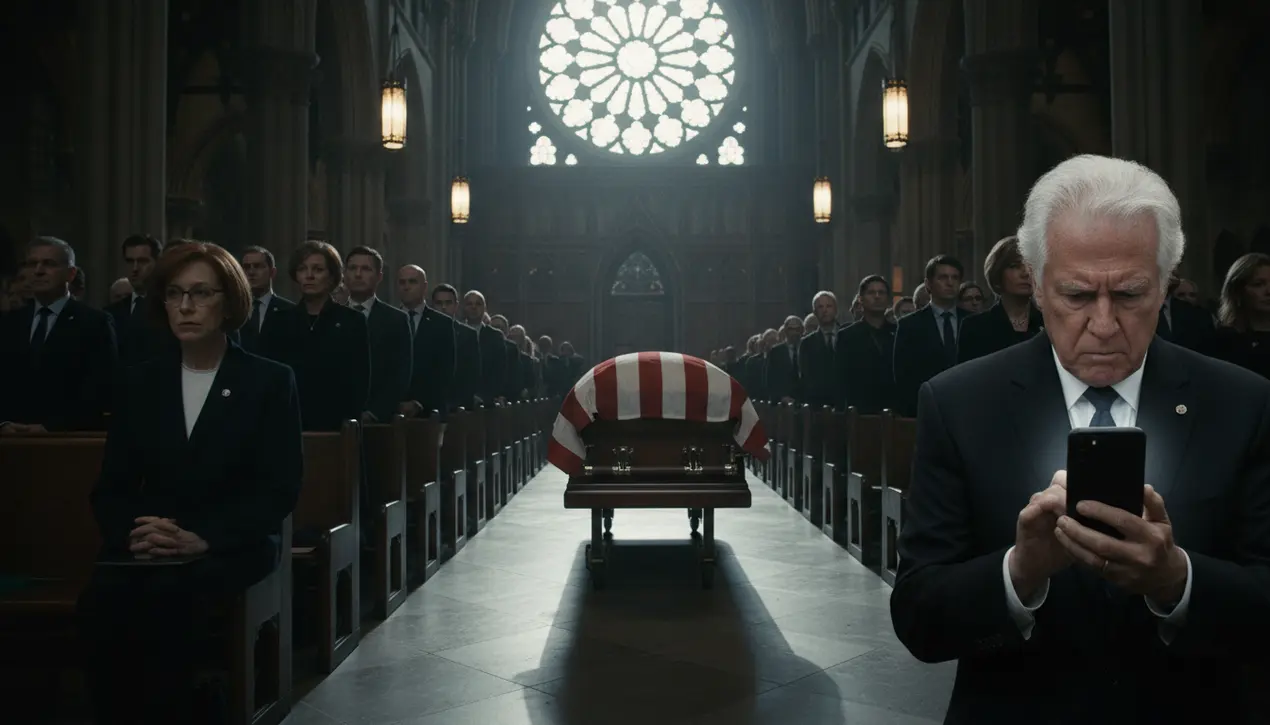
Politicsgovernments & cabinetsLeadership Transitions
Dick Cheney's Funeral Highlights Political Divisions
RO
Robert Hayes
2 days ago7 min read2 comments
The funeral service for former Vice President Dick Cheney, held beneath the vaulted ceilings of Washington National Cathedral, became an unexpected but starkly revealing tableau of the nation's profound political schisms, a moment where the rituals of state mourning collided with the raw, unmediated tensions of the contemporary American landscape. The sight of MSNBC's Rachel Maddow, a prominent voice of the progressive left, paying her respects amidst a gathering of Republican stalwarts was a scene rich with subtext, a fleeting glimpse of a bygone era where political adversaries could, at least in moments of ceremony, acknowledge a shared civic fabric.This visual, however, was almost instantly eclipsed by the digital fury emanating from Mar-a-Lago, where former President Donald Trump took to his Truth Social platform, issuing a threat so grave it seemed to tear at the very parchment of the republic. His post, a menacing allusion to the hanging of Democrats, did not merely disrupt the somber proceedings; it actively weaponized them, transforming a day of reflection into a stark referendum on the soul of American governance.To analyze this dichotomy is to understand the two competing narratives of American power: one, embodied by Cheney’s own complicated legacy, rooted in a traditional, if often fiercely contested, institutionalism, and the other, championed by Trump, which operates through perpetual confrontation and the systematic erosion of normative boundaries. Cheney, a figure who wielded immense influence from the halls of the Pentagon to the Situation Room, represented a brand of conservative realpolitik that, for all its controversies surrounding the Iraq War and enhanced interrogation, still functioned within a recognizable framework of statecraft and bureaucratic process.His funeral, therefore, was not just a farewell to a man, but to a certain conception of Washington—one where battles, however brutal, were fought within a set of established rules. The presence of figures from across the political aisle, however strained, was a nod to that fading tradition.In stark contrast, Trump’s social media broadside, invoking the imagery of capital punishment for political opponents, represents a radical departure, a tactic more akin to an autocratic playbook than to any precedent in modern U. S.history. This is not merely heated rhetoric; it is an explicit incitement that further coarsens the political discourse and normalizes violence as a tool of political engagement.The timing, coinciding with a funeral for a former leader, was calculated, a deliberate act to command the news cycle and remind his base of his pugilistic stance. The consequences of this parallel reality are dire, signaling a future where political transitions are not peaceful, and dissent is not merely criticized but threatened with extinction. Historians might look back on this day as a perfect microcosm of America’s identity crisis: within the cathedral walls, a final, formal tribute to the old guard of the Cold War and post-9/11 era, while outside, and infinitely more potent in the digital ether, the chaotic and norm-shattering energy of a movement that has little patience for such ceremonies, and even less for the democratic traditions they are meant to symbolize.
#featured
#Dick Cheney
#funeral
#Rachel Maddow
#Donald Trump
#political division
#death threat
Stay Informed. Act Smarter.
Get weekly highlights, major headlines, and expert insights — then put your knowledge to work in our live prediction markets.
Comments
Loading comments...
© 2025 Outpoll Service LTD. All rights reserved.